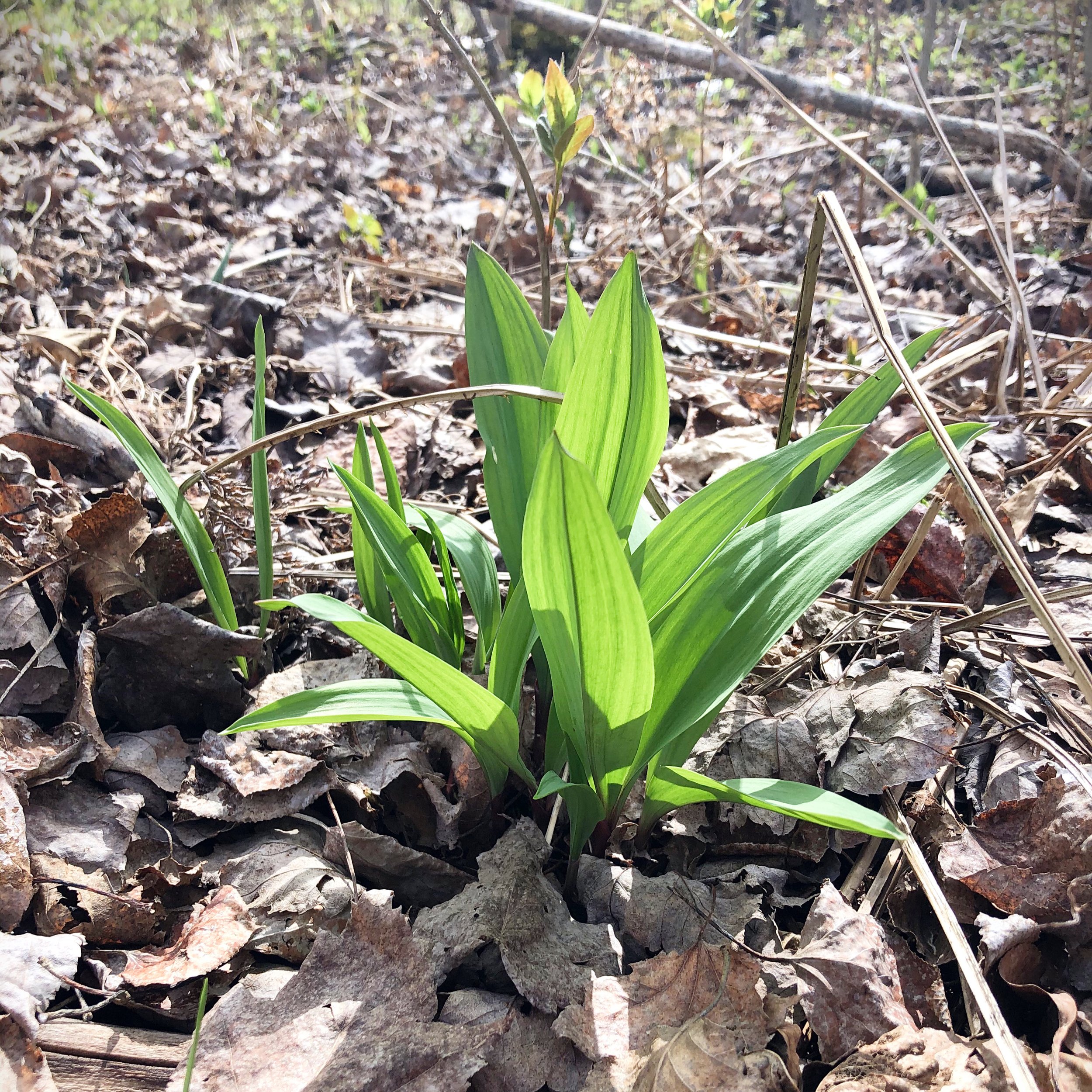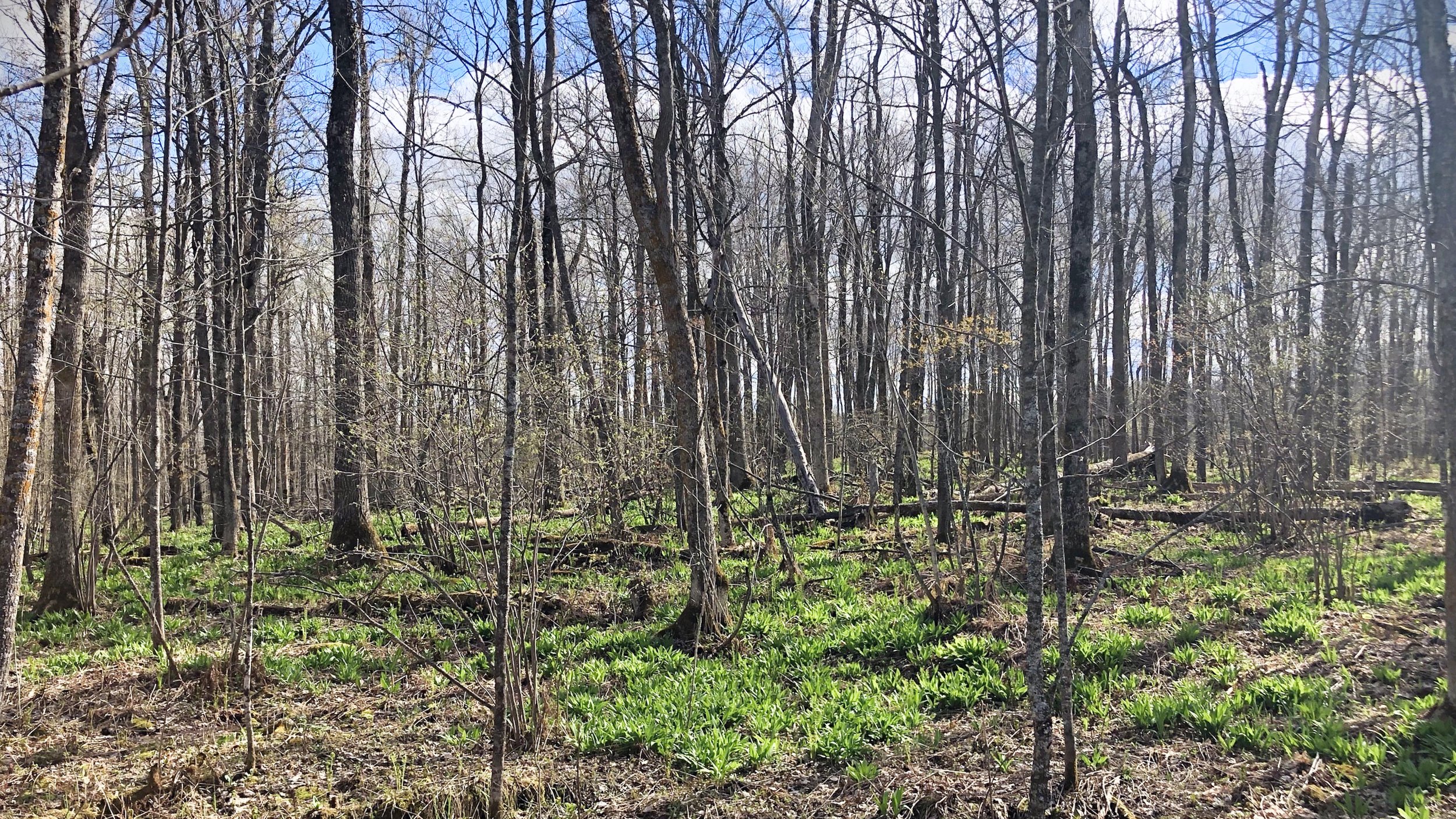Dietary Toxicology: Too Much Ramp for Your Rump
May 14th, 2022 — 5 to10 minute read
In many parts of the US, when the snow melts away, Ramps are pretty much the first green thing to sprout out of the forest floor. Ramps (Allium tricoccum and Allium burdickii) are forge-able wild onion native to North America. They are related to onion and garlic, and well… they taste like they are related to onion and garlic.
Last year I moved back to the Midwest from Texas and when walking in the woods I found thousands of untouched ramp bushels. So I decided to practice the time honored Texas tradition of killing and eating any edible organism you come across. I was pretty excited to feast on my haul because… as I said before, they taste like onion and garlic. How can you go wrong with that?
So I looked on dozens of websites for cool ways to use the ramps and eventually settled on making a pesto with 3 ramp leaves and topping a steak with it. Oh boy was it good… but it wasn’t long before I knew, deep in my bowels, something was wrong. It was not 15 minutes before… I experienced severe gastrointestinal distress.
In graduate school I became interested in the dietary aspect of toxicology. When it comes to plants, toxins come to occur in them through two different processes. The first, environmental uptake and deposition, is basically foreign substances from a plant’s environment end up accumulating in or on a plant and whatever person or animal that eats them gets exposed (I’ve actually published on the topic). The second is proteins and molecules deliberately produced by plants, often for defense against predation. Some examples are:
Capsaicin produced by peppers to disincentivize mammals from consuming their seeds. Birds are generally unaffected by capsaicin and happily eat the hottest of peppers, unwavered, and ideally poop out the seeds far away.
Nicotine produced by tobacco which, when consumed by humans, results in a mild nerve stimulation that can be pleasant, but when consumed by a much smaller animal, like a bug, it results in horrible death by full body paralysis.
Lectins are a large group of defensive proteins produced by a variety of legumes or grains. Lectins at their worst can kill. Ricin (as seen in Breaking Bad) found in castor beans can kill from a single bean. Phytohemagglutinin from kidney beans can cause blood clots, among other things, when improperly cooked.
Back to the Ramps. So I, admittedly, don’t have the strongest intestinal fortitude, but the events of that dinner happened, to varying degrees, each time I used the ramps. So I did some scholarly searching. I found out that the Ojibwa and Iroquois used fresh ramps as an emetic (a.k.a. diarrhea fuel), to treat intestinal worms, and for “spring cleaning”.
I could not find the name of the compound that had this effect (this isn’t uncommon with plant compounds, if anyone finds it let me know and I’ll add it in and credit you. I looked for a half-hour before I gave up), but it can be dampened by thoroughly cooking the ramp at high temperatures. Although you can still overdo it if you eat too many cooked ramps. There are several scientific articles regaling the nutritional value of ramps, but you don’t digest what you don’t digest. Now, this effect could be used strategically, as the American Indians used it. One might become wealthy selling an “all natural, made in America from American material, Authentic American Indian Cleanse.” and target it to yuppy gen - Xers and millennials (if you do this you owe me royalties). Or, alternatively, if you don’t like someone who likes garlic and onions a lot.
As I said, I read dozens of recipes for cooked and raw preparations of ramps, not one of them mentioned rapid onset diarrhea… I did not miss it… trust me, I would have noticed that. Which tells me two things… either these people had not actually eaten the recipes they wrote or violent diarrhea is not sufficiently outside their normal frame of reference to register as out of the ordinary.
I hope this precautionary tale was educational, or at least somewhat entertaining. Ramps are currently in full swing where I grew up around Green Bay, WI. They should be emerging in a week or so where I live now in upper Wisconsin/Minnesota. Go out in the woods and find some and try them. They are very good… just make sure to thoroughly cook them… or don’t if that is your thing.


